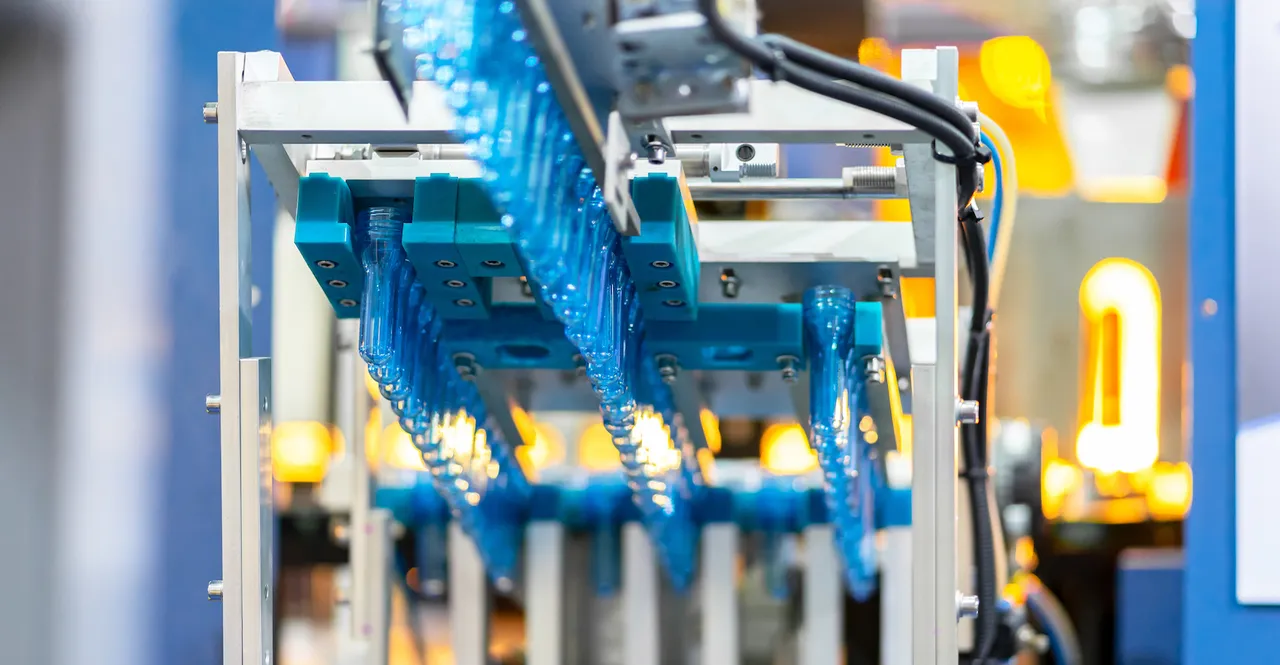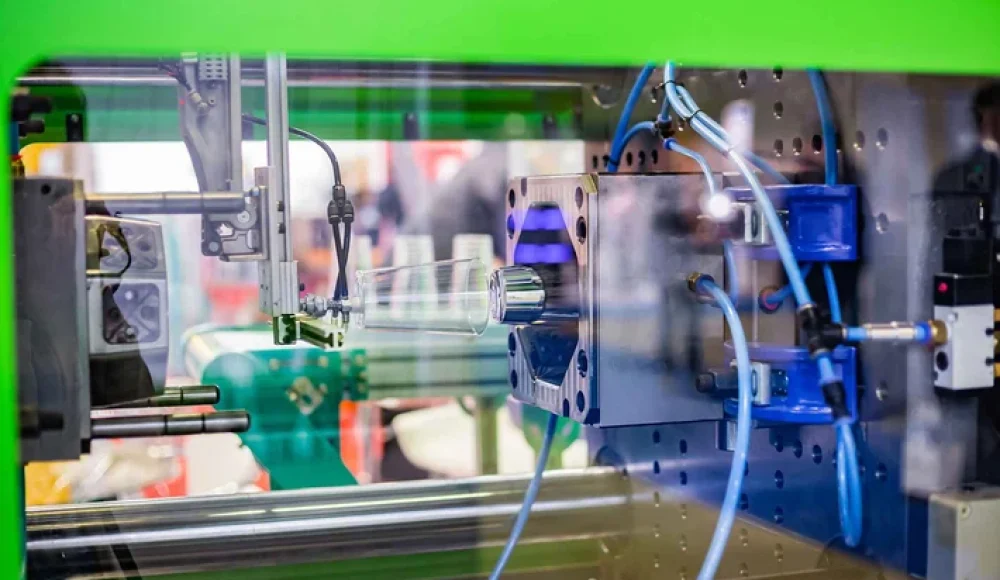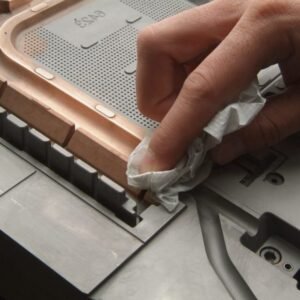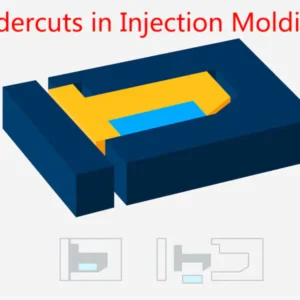で 精度の高いトップ, 私たちは、優れた品質は偶然に生まれるものではなく、生産のあらゆる段階で組み込まれていると信じています。. In today’s competitive manufacturing environment, customers demand not only precision but also reliability and consistency across every part produced.
これを達成するために, Tops has integrated automated quality checks throughout our プラスチック射出成形 オペレーション. These advanced systems leverage real-time monitoring, machine vision, and data analytics to guarantee that every product meets strict dimensional and aesthetic standards. 結果: より速い生産, 廃棄物の削減, and consistently high-quality parts that perform flawlessly in critical applications.
What Are Automated Quality Checks?
Automated quality checks refer to the use of intelligent inspection technologies—including machine vision systems, precision sensors, and data-driven software tools—to evaluate molded parts both during and after the injection molding process.
These systems automatically detect surface defects, dimensional deviations, color inconsistencies, 反り, and contamination, all without slowing down production. The goal is to identify potential problems early, ensuring that only defect-free components advance through the production line.
Unlike manual inspection, which can be subjective and prone to fatigue, automated systems operate continuously and with micron-level accuracy, maintaining constant vigilance over every shot and every cycle.
Why Automated Quality Checks Are Essential
Modern plastic manufacturing operates on tight tolerances and high volumes. Manual inspection alone cannot sustain the precision and speed demanded by today’s industries. Here’s why automation is critical:
Higher Accuracy and Repeatability: Automated inspection eliminates human error, providing objective, 繰り返し可能な結果.
スケーラビリティ: Automated systems can handle thousands or millions of parts with no loss of consistency.
効率: Real-time inspection prevents defective parts from moving forward, reducing rework and downtime.
Compliance: Many industries—automotive, 医学, and aerospace—require data traceability and documented quality assurance that only automated systems can provide.
要するに, automated quality checks ensure every product meets both engineering and regulatory standards without compromising production speed or profitability.
どうやって 精度の高いトップ Implements Automated Quality Control
最高の精度, 私たちの automated quality control framework combines multiple technologies and inspection methods to deliver consistent results across all production runs.
1. Real-Time Process Monitoring
We employ in-mold sensors and smart controllers that constantly measure 温度, プレッシャー, 噴射速度, および冷却率. If any parameter deviates from the optimal process window, the system instantly alerts operators or even auto-adjusts the process before defects occur.
This proactive control ensures 寸法安定性 and consistent part quality from cycle to cycle.
2. Machine Vision Inspection Systems
Tops uses high-resolution cameras and 3D scanning technologies to visually inspect each molded component. These vision systems analyze surface texture, 幾何学, 色の均一性, and part alignment, detecting even microscopic imperfections invisible to the naked eye.
Through artificial intelligence (AI) and pattern recognition algorithms, our systems learn to distinguish between acceptable natural variations and true defects, improving accuracy over time.
3. Data-Driven Quality Assurance
Every production cycle generates valuable data—cycle times, injection pressures, cooling durations, and dimensional readings. Tops’ automated quality systems capture and analyze this information in real-time to detect trends, drifts, or early warning signs of potential quality issues.
The data is stored and traceable, enabling predictive maintenance 継続的な改善. Our engineers can use historical performance insights to fine-tune molds, 材料, or machine settings for optimal yield and part consistency.
4. Automated Dimensional Measurement
To verify that parts conform to strict dimensional tolerances, Tops integrates automated coordinate measuring machines (三次元測定機) そして laser scanning systems. These tools perform high-precision measurements on key features such as hole diameters, 壁の厚さ, and part geometry.
By automating dimensional verification, we ensure every batch matches the customer’s CAD model specifications, supporting consistent assembly fit and function in the final product.
The Benefits of Automated Quality Checks

The Benefits of Automated Quality Checks
1. Consistency and Precision
Automation ensures that each part is produced with minimal variation, meeting exact specifications every time. This consistency is critical in industries where a minor deviation can lead to performance failure or noncompliance.
2. Faster Production Cycles
By performing inspections during the production process, automated systems minimize downtime and enable real-time correction, resulting in shorter cycle times and uninterrupted workflow.
3. Reduced Waste and Cost Efficiency
Automated defect detection reduces scrap rates, やり直し, and material loss. By identifying issues before they escalate, manufacturers can save on both material and labor costs, achieving leaner, more sustainable operations.
4. Enhanced Customer Satisfaction
Customers benefit from 信頼性のある, defect-free components that meet all performance and aesthetic expectations. Consistent quality enhances product reliability, strengthens brand reputation, and builds long-term customer trust.
Industries That Benefit from Automated Quality Checks
Automated inspection systems are now indispensable across multiple industries where 正確さ, 安全性, and consistency are non-negotiable.
自動車: Precision-molded components such as connectors, ハウジング, and interior trims demand flawless geometry and durability.
健康管理: 医療機器, syringes, and diagnostic equipment must meet stringent FDA and ISO standards with zero defects.
消費財: Consistency in appearance, テクスチャ, and color is vital for brand reliability in mass production.
エレクトロニクス: Tiny components such as casings, スイッチ, and connectors require micrometer-level dimensional control to ensure performance and safety.
Tops’ automated systems are tailored to meet the unique demands of each sector, guaranteeing quality regardless of volume or complexity.
パートナー 精度の高いトップ for Automated Quality Assurance
で 精度の高いトップ, our dedication to automation and precision engineering ensures that your plastic parts are manufactured to the highest standards—every time. Whether your project requires thousands or millions of components, our automated quality control systems deliver consistent results while optimizing production efficiency and cost.
We combine decades of molding expertise with the latest smart manufacturing technologies to help you achieve better quality, より速いリードタイム, and reduced operational risks.
今すぐお問い合わせください to learn how Tops’ automated quality checks can enhance your production performance—or request a quote for your next injection molding project.
よくある質問
- What technologies are used in automated quality checks for injection molding?
Automated quality checks use machine vision cameras, laser scanners, pressure and temperature sensors, and AI-driven software to monitor and verify the molding process and finished parts in real-time. - Can automated systems replace human quality inspectors completely?
While automated systems handle most inspections faster and more accurately, skilled human technicians still oversee operations, interpret complex data, and make process adjustments when necessary. - How do automated checks improve product consistency?
They apply the same inspection criteria across every part, eliminating human bias and error, which ensures consistent dimensional and cosmetic quality in all production runs. - What types of defects can machine vision detect?
Machine vision can detect flash, ショートショット, 火傷, surface scratches, warpage, ボイド, and discoloration—often at the micron level of precision. - Are automated quality systems suitable for all types of plastic parts?
はい. These systems can be customized to inspect various materials, 色, および部品の形状, making them ideal for both simple and complex molded components. - What industries benefit the most from automated quality control?
自動車, 医学, 家電, and aerospace industries benefit the most due to their need for precision, 信頼性, and strict regulatory compliance.



